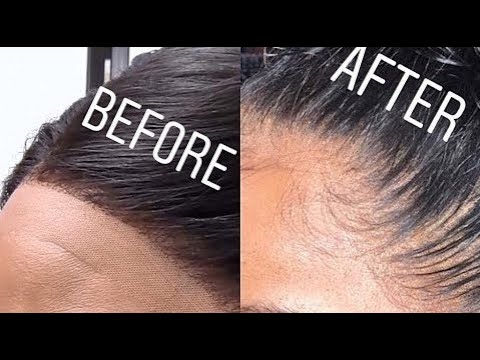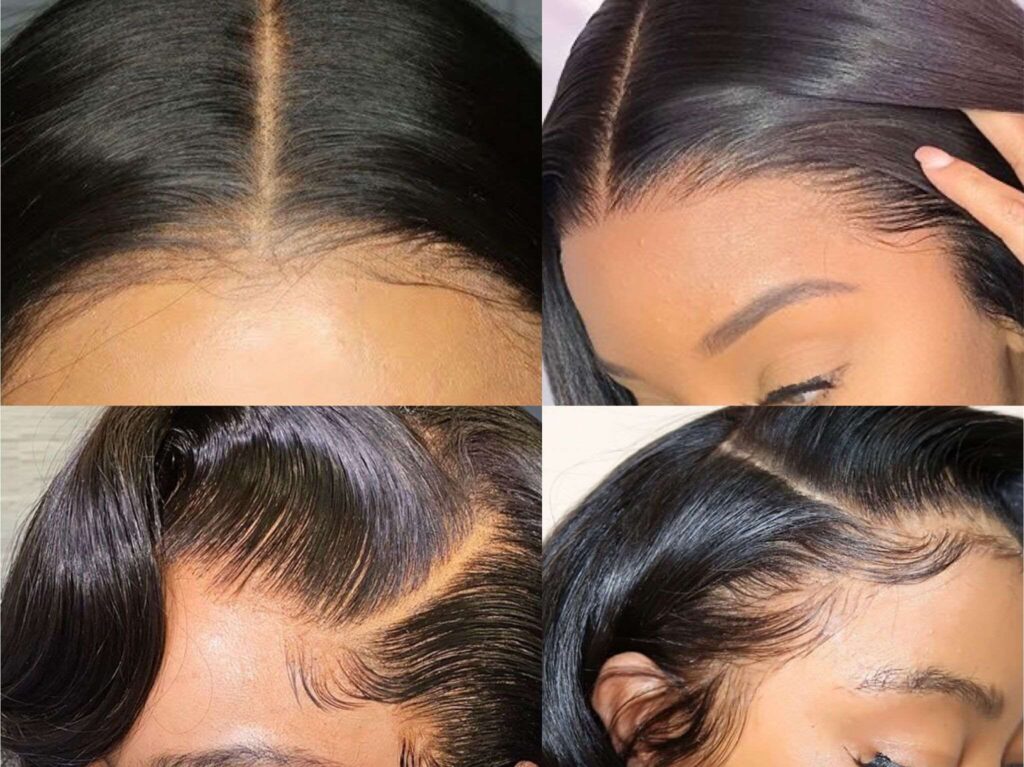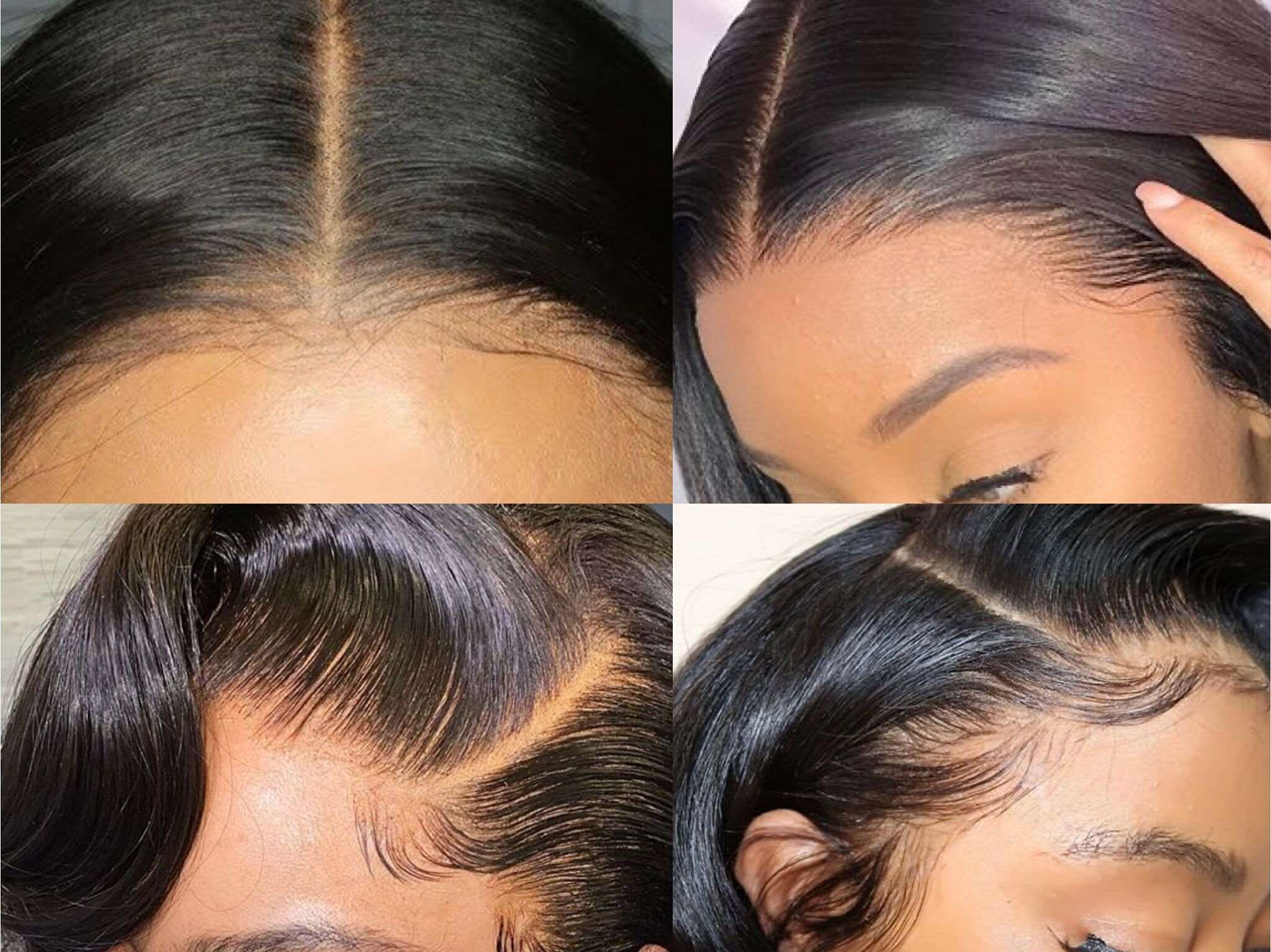Plucking a human hair wig is a delicate process that involves carefully removing excess hair from the hairline to create a more natural look. To begin, use a pair of tweezers to pluck hairs in small sections along the front of the wig, making sure to mimic the hairline pattern. Take your time and work slowly, ensuring you don’t overpluck or create an unnatural appearance. Once you’ve achieved the desired density, style the wig as desired and enjoy a flawless, realistic look that is sure to turn heads.
Choosing the Right Tools
Gather the Necessary Tools
Before you begin the process of plucking your human hair wig, it is essential to gather all the necessary tools. This ensures that you have everything at your disposal and can work efficiently. The tools you will need include a pair of tweezers, a wig stand, a comb, scissors, and a spray bottle filled with water. These tools are readily available at beauty supply stores or online.
Selecting the Right Tweezers
When it comes to plucking a human hair wig, the type of tweezers you use plays a crucial role. It is important to choose tweezers with a pointed and slanted tip, as they provide precision and control. Avoid using tweezers with a blunt tip, as they can cause damage to the hair or the wig cap. Additionally, ensure that the tweezers are made of stainless steel for durability.
Preparing the Wig
Detangle the Wig Hair
Before you start plucking the hairline of your wig, it is essential to detangle the wig hair. This step ensures that the hair is smooth and free of any knots or tangles, making it easier to work with. Gently comb through the wig using a wide-toothed comb or your fingers, starting from the ends and gradually working your way up. Take your time and be gentle to avoid any breakage or damage.
Secure the Wig on a Wig Stand
To ensure stability and ease of plucking, it is recommended to secure the wig on a wig stand. A wig stand not only keeps the wig in place but also provides a convenient way to work on it. Simply place the wig on the stand, making sure it is secure and positioned correctly. This allows you to have both hands free to work with the tweezers and comb.

Identifying the Hairline
Locating the Natural Hairline
The first step in plucking the hairline is to identify the natural hairline of the wig. This is crucial for achieving a realistic and natural-looking result. Gently place the wig on your head or a mannequin head and adjust it until it sits comfortably along your own hairline. Take note of the areas where your natural hairline is visible, as these are the areas that will require plucking.
Determining the Widest Part of the Wig
To create a natural-looking hairline, it is important to determine the widest part of the wig. This is usually the area around the temples and forehead, where the wig may appear too dense or bulky. By identifying this area, you can focus your plucking efforts to achieve a more gradual and realistic hair density. Take your time to study the wig and determine which areas need thinning out.
Plucking the Hairline
Using the Tweezers to Pluck Individual Hairs
Using the pointed and slanted tweezers, gently pluck individual hairs along the hairline. Start with a small section and work your way around, focusing on areas that need thinning out. Take your time and pluck one hair at a time, being careful not to remove too many hairs at once. This allows for better control and ensures a natural-looking result.
Plucking in the Direction of Natural Hair Growth
When plucking the hairline of your wig, it is important to pluck in the direction of natural hair growth. This helps to maintain a realistic appearance and prevents the hair from looking unnatural. Take note of the direction in which your natural hair grows and replicate that when plucking the wig. Plucking against the hair growth can cause the wig to look sparse or uneven.

Creating a Natural Hair Density
Gradually Plucking the Wig Hair
To create a natural hair density, it is important to gradually thin out the wig hair. This involves plucking small sections at a time instead of plucking all the hair at once. By plucking gradually, you can assess the hair density as you go and avoid overplucking. It is better to have a denser wig and adjust as needed rather than removing too much hair and ending up with a sparse-looking hairline.
Avoiding Overplucking
One common mistake to avoid when plucking a human hair wig is overplucking. While it may be tempting to create an extremely natural-looking hairline, removing too much hair can result in an unnatural and sparse appearance. It is important to step back and assess the hair density as you go, ensuring that the wig still looks full and voluminous. Remember, it is always easier to remove more hair later if needed.
Blending the Hairline
Using a Comb to Blend the Plucked Hair
After plucking the hairline, it is important to blend the plucked hair with the rest of the wig. This helps to create a seamless and natural transition between the plucked and non-plucked areas. Use a wide-toothed comb to gently comb through the hair, starting from the roots and working your way towards the ends. This helps to blend the plucked hair with the rest of the wig, creating a harmonious look.
Ensuring a Seamless Transition
To ensure a seamless transition between the plucked hairline and the rest of the wig, it is important to take your time and pay attention to detail. Use the comb to gently blend the hair, adjusting the density and direction as needed. Step back and assess the wig from different angles to ensure that the hairline looks natural and realistic. Make any necessary adjustments until you are satisfied with the result.

Trimming the Lace
Trimming the Excess Lace
Once you have plucked the hairline and blended it with the rest of the wig, it is time to trim the excess lace. The lace is the material that extends beyond the hairline and needs to be trimmed for a natural-looking finish. Carefully trim the lace using a pair of sharp scissors, following the shape of your natural hairline. Take your time and make small, precise cuts to avoid any mistakes.
Cutting Along the Hairline
When trimming the lace, it is important to cut along the hairline to create a seamless and realistic finish. Follow the natural shape of your hairline, making small snips along the edges of the lace. Take care not to cut into the hairline itself, as this can cause damage to the wig. It is better to make multiple small cuts than one large cut to ensure accuracy and precision.
Styling the Wig
Washing and Conditioning the Wig
Before styling your plucked human hair wig, it is important to wash and condition it to keep it looking its best. Use a gentle shampoo and conditioner specifically designed for human hair wigs. Fill a spray bottle with water and mist the wig to dampen it. Apply a small amount of shampoo to your hands and gently work it into the hair, starting from the roots and working your way to the ends. Rinse the wig thoroughly and apply conditioner, focusing on the ends. Rinse once again and gently towel dry the wig before styling.
Styling with Heat Tools
One of the advantages of human hair wigs is their ability to withstand heat styling. You can use heat tools such as straighteners, curling irons, and hairdryers to style your wig just like you would with your natural hair. However, it is important to use heat protection products to prevent damage to the hair. Set your heat tools to a low or medium heat setting and style the wig as desired. Take your time and style small sections at a time for better control and precision.

Caring for the Wig
Storing the Wig Properly
Properly storing your human hair wig when not in use is crucial for maintaining its quality and prolonging its lifespan. After wearing the wig, gently detangle it using a wide-toothed comb or your fingers. Place the wig on a wig stand to maintain its shape and prevent tangling. Store the wig in a cool and dry place away from direct sunlight, as exposure to heat and sunlight can cause damage to the hair.
Maintaining a Regular Cleaning Routine
Regular cleaning is essential to keep your human hair wig looking its best. Depending on how often you wear the wig, it is recommended to clean it every 10-14 days. Use a gentle shampoo specifically formulated for human hair wigs and follow the same washing process mentioned earlier. Avoid rubbing or wringing the wig as it can cause damage. After washing, gently towel dry the wig and let it air dry on a wig stand. Do not use heat tools or style the wig until it is completely dry.
Common Mistakes to Avoid
Over-plucking the Hairline
One common mistake to avoid when plucking a human hair wig is over-plucking the hairline. Removing too much hair can result in an unnatural and sparse appearance. It is important to take your time and pluck gradually, assessing the hair density as you go. Remember, it is always easier to remove more hair later if needed.
Using the Wrong Tweezers
Using the wrong type of tweezers when plucking a human hair wig can cause damage to the hair or the wig cap. It is important to choose tweezers with a pointed and slanted tip for precision and control. Avoid using tweezers with a blunt tip, as they can be ineffective and cause more harm than good. Additionally, ensure that the tweezers are made of stainless steel for durability.
In conclusion, plucking a human hair wig is a process that requires patience, precision, and attention to detail. By gathering the necessary tools, preparing the wig, identifying the hairline, plucking gradually, and blending the hairline, you can achieve a natural and realistic result. Remember to trim the excess lace, style the wig with heat tools, and properly care for it to maintain its quality. Avoid common mistakes such as over-plucking the hairline and using the wrong tweezers. With these tips in mind, you can confidently pluck your human hair wig and enjoy the endless style possibilities it offers.

